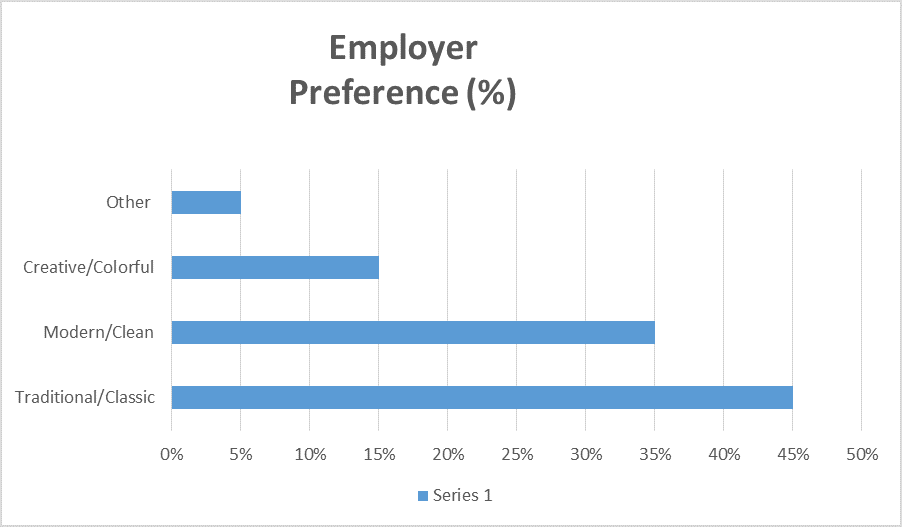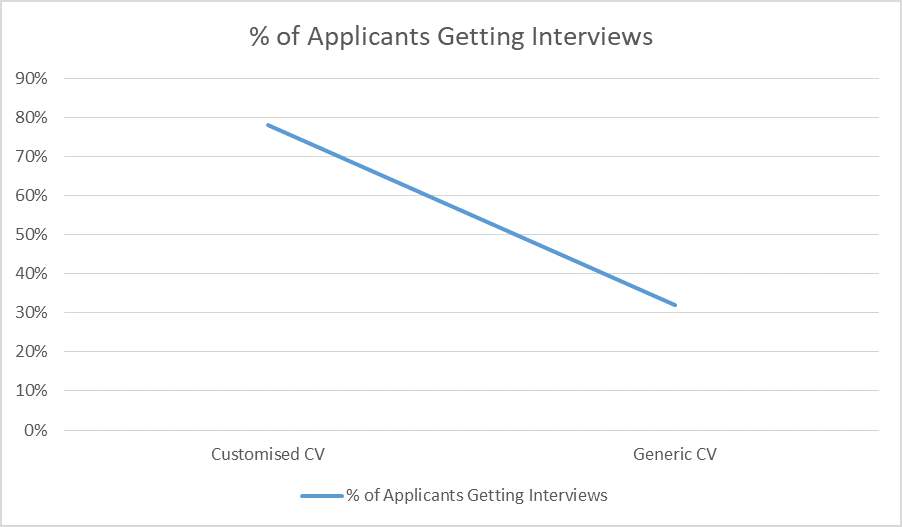Not Getting Interviews? Your CV Format Could Be the Problem

Are you sending out your CV but getting no replies? You’re not alone. Many students and job seekers in New Zealand face this problem. The main reason? Your CV format might be wrong. Yes, the way your CV looks is just as important as what’s in it. Even if you have good skills, a poorly formatted CV can hold you back.
Did you know?
A study found that 75% of CVs are rejected in under 10 seconds. Another survey in New Zealand showed that 6 out of 10 recruiters skip CVs with poor formatting.
That’s a big deal.
In New Zealand, there is something called the NZ CV format. It’s a special way of writing your CV that matches what Kiwi employers expect. If your CV doesn’t follow this format, it might get ignored.
Many people use old or overseas templates. But these don’t always work here. What works in the US or UK might not be right for NZ.
That’s why this blog will help you.
We’ll explain what the NZ standard CV format is. We will also show you what makes the best resume templates for New Zealand jobs. And we’ll share tips, tables, and charts to help you fix your CV fast.
This guide is written in simple words. No hard stuff. Just what you need to get more interview calls. So, if you’re tired of being ignored…
Let’s find out if your CV format is the problem.
What Is the NZ CV Format?
The NZ CV format is the style and structure that employers in New Zealand expect. It’s simple, clear, and straight to the point.
In New Zealand, employers like CVs that:
- Are easy to read
- Focus on skills and achievements
- Use plain English
- Are no more than 2-3 pages long
It’s different from CVs used in some other countries. For example, in some places, people include personal photos, long bios, or full academic records. That’s not needed in NZ.
- Instead, Kiwi employers want:
- A short personal summary at the top
- A clear list of skills
- Simple job history with key results
- Education details
- No photo
- No birthdate
- No fancy designs
Let’s compare:
NZ CV vs Overseas CV Styles
| Feature | NZ CV Format | Overseas CV Format (Common) |
| Length | 2–3 pages | 4–6 pages or more |
| Photo | Not included | Often included |
| Language | Simple, clear English | Can be formal or academic |
| Personal Details | Name, phone, email only | Name, photo, date of birth, etc. |
| Style | Plain & neat | May be colourful or fancy |
| Focus | kills & results | Job duties & responsibilities |
Using the wrong format can confuse employers. They may not take the time to read it. So, following the NZ format increases your chance of getting shortlisted.
What to Include in a Perfect NZ CV
If you want to get interviews in New Zealand, your CV must be clear and relevant. Here’s what to include in the NZ standard CV format:
- Basic CV Layout:
- Contact Information
- Full name
- Phone number
- Email address
- LinkedIn profile (optional)
- Personal Statement (3–4 lines)
- A short intro about who you are and what job you want.
- Use simple language. Be confident.
Example:
I am a graduate and have recently completed my engineering. I have strong problem-solving skills and am looking for an entry-level role in construction engineering in Auckland.
Key Skills
- List 6–8 skills that match the job.
- Use bullet points and keep it short.
Work Experience
- Job Title
- Company Name
- Dates
3–4 bullet points showing what you did and achieved. Use action words like designed, managed, improved, and solved.
Education
- Degree/Qualification
- School or University
- Dates
Certifications & Courses (if any)
- List only those related to your job goal.
References
- Write “Available on request” unless asked to list names.
Visual CV Layout Guide:
| Section | Details |
| Contact Info | Name, phone, email |
| Personal Statement | 3–4 lines summary |
| Key Skills | Bullet points (6–8 skills) |
| Work Experience | Roles + results |
| Education | Degrees and dates |
| Certifications | Optional courses |
| Referees | Available on request |
Common NZ CV Mistakes to Avoid
Numerous job seekers in New Zealand make small resume mistakes that lead them to no interviews. Here are the most common ones and how to avoid them:
Top CV Mistakes:
- Using a non-NZ format
NZ recruiters expect a simple, clean layout. No photos. No long paragraphs.
- Too much information
Don’t mention every job you have worked at. Mention only the relevant roles.
- Generic personal statements
Saying “I’m a hard worker” is too basic. Be particular about what you offer.
- Spelling and grammar errors
Always proofread. Better yet, ask someone to review your CV.
- No keywords from the job ad
Recruiters use software to scan CVs. If your CV doesn’t have the right words, it won’t be seen.
- Wrong CV file name or format
Use PDF format unless told otherwise. Name it like: FirstName_LastName_CV.pdf.
CV Rejection Rate Chart:
Here’s a quick look at why CVs get rejected:

Best Resume Templates That Work in NZ
Finding the right resume template can maximize your chances of getting interviews in New Zealand. A good layout is simple, clear, and easy to read.
Let’s look at what works best:
| Feature | Why It Matters |
| Clean layout | Easy for recruiters to scan quickly. |
| No photo | NZ employers prefer skills over looks. |
| Simple fonts (Arial, Calibri) | Looks professional and clean |
| One-page for freshers | Shows only what’s important |
| Clear headings | Helps recruiters find what they need quickly |
| Bullet points | Easier to read than big paragraphs |
Preferred CV template NZ Style by Employers
| Template Style | Employer Preference (%) |
| Traditional/Classic | 45% |
| Modern/Clean | 35% |
| Creative/Colorful | 15% |
| Other | 5% |

- Tip: Use templates made for NZ standards. You can find numerous templates for free on online platforms. Also, for professional assistance, you can ask for help from local CV writers.
- Or, if you’re aiming for senior roles or want professional polish, consider working with executive CV writers who understand what New Zealand employers expect.
Customising Your CV for Every Job
One big mistake many job seekers make? They use the same CV for every job. In New Zealand, it is not a good idea.
To secure more interviews, you need to tailor your resume to the specific job requirements you are applying for:
- How to Customise Your CV:
| Section | What to Change |
| Objective | Mention the job title and company name. |
| Skills | Highlight the skills listed in the job ad. |
| Experience | Focus on tasks that match the job requirements. |
| Keywords | Use the same words from the job description. |
Impact of Customised CVs on Interview Calls

Customised resumes have a higher acceptance rate than generic ones.
Why It Works?
Recruiters usually use software to scan resumes. If your resume doesn’t match the job ad, it may never be seen.
So, even with substantial experience, a generic CV may keep you back. It is best to keep updating your skills, objectives, and keywords before you hit the send button.
Common CV Formatting Mistakes in NZ
Even a strong CV can fail if the format is wrong. In New Zealand, there are specific things employers look for, and many students or job seekers miss them.
Let’s fix that.
| Mistake | Why It’s a Problem |
| Using fancy fonts or colours | Looks unprofessional and hard to read |
| Writing long paragraphs | Recruiters scan, not read every word. |
| No clear headings | Makes it hard to find key info quickly |
| Listing jobs with no bullet points | Looks messy and unorganised |
| Not using NZ spelling. | Feels unfamiliar or careless to local readers |
What Recruiters Notice First on a CV
| Layout & Formatting | 45% |
| Work Experience | 30% |
| Skills Section | 15% |
| Education | 10% |

- Quick Tip: Always keep it clean, simple, and easy to scan. Use headings like:
- Profile
- Skills
- Work Experience
- Education
- Referees
And always stick to 1-2 pages only, unless you have 10+ years of experience.
NZ CV Template Examples You Can Use Today
Using the right CV template can make a huge difference. It helps you stay organised, look professional, and show your skills clearly. Let’s look at a few simple CV templates that follow the NZ standard CV format.
Popular NZ CV Templates
| Template Name | Best For | Key Feature |
| Basic Clean CV | Fresh graduates | Simple layout, focuses on education |
| Skills-Based CV | Career changers | Highlights skills over job experience |
| Professional Format | Experienced applicants | Balanced layout with strong work history |
Most Used CV Types in NZ (2025 Survey Data)
| Professional Format | 45% |
| Skills-Based | 30% |
| Basic Clean CV | 20% |
| Others | 5% |

What Makes These Templates Work?
Out of numerous reasons, we have mentioned a few below that make these templates work:
- Simple To Read
Recruiters only give 10 seconds to scan your resume.
- Specific To the Job
Your resume should be tailored to the specific job you are applying for.
- ATS Friendly
ATS systems can easily read these templates.
- Quick tip
Opt for a template that matches your current situation. For instance, if you don’t have any working experience, then opt for a basic clean CV. Opt for a basic CV if you are switching careers.
Final Thoughts
If you’re still not getting interview calls, your NZ CV format could be the issue. A few smart changes, like using an NZ standard CV format, writing clear points, and adding keywords, can make a huge difference. Employers in New Zealand don’t want long, fancy resumes. They want clear, local, job-matching CVs.
- Remember:
- Use simple words
- Keep it short and tidy.
- Show only the most relevant stuff
And don’t forget that each job needs a slightly different CV. That’s why using the best resume templates and tailoring them for each role gives you a better chance.
Frequently Asked Questions
1. Why is my CV not getting me interviews in New Zealand?
Your CV format might not match what NZ employers expect. Even with strong skills, if your layout is confusing or doesn’t highlight the right details, it may get ignored.
2. What is the NZ standard CV format?
The NZ CV format is a clear, simple, and skills-focused layout. It avoids personal photos, long paragraphs, and irrelevant information. It usually includes a short profile, key skills, work history, education, and referees.
3. How long should my CV be for NZ jobs?
Ideally, 2–3 pages. If you’re a recent graduate or have less experience, 1–2 pages is fine.